“From the first day Jia Jia the panda was given to Ocean Park for display, she had already stopped being ‘alive,’” said activist Roni Wong of the Dolphin Family, a group against dolphin captivity and cruelty.
“She was imprisoned for most of her life, and was used as a political and diplomatic tool. Instead of feeling sad about her death, we animal rights activists say sorry – sorry for taking away her freedom,” said Wong. “Death was a relief for her.”

Against mainstream narrative
Jia Jia the giant panda died at age 38 – a world record – in Ocean Park earlier this month. Born in the wild in 1978, the panda was given to Hong Kong by Beijing in 1999 to celebrate the second anniversary of the former British colony’s transfer of sovereignty. Ocean Park is home to three other pandas.
Local media have described Jia Jia’s death as a loss to Hong Kong, as the “beloved panda of Hongkongers” brought many collective memories to residents and visitors alike. Ocean Park also took the opportunity to honour its “important animal ambassador” by making a video and sharing stories about the panda and her caregivers.
“Many people in Hong Kong are sad about Jia Jia’s passing away. They think Ocean Park has done a good job caring for Jia Jia,” Wong told HKFP. “There is no doubt that Ocean Park provided a safe haven for her, and that its staff gave her great care in every possible way.”
“But freedom was the basic right of Jia Jia. Ocean Park stripped her of the rights to move freely, to socialise, and to enjoy fresh bamboo. She was imprisoned for life,” he added. “If Ocean Park is really dedicated to conservation efforts, why doesn’t it focus on expanding animals’ protected areas?”
Wong gave the example of captive breeding: Male pandas are made to watch mating videos and trained to strengthen their leg muscles for mating purposes. Following the practice in China, Ocean Park also uses artificial insemination.
This is done by drawing sperm from the males by inserting tubes into their anus, and then later putting the sperm inside the bodies of sedated female pandas. In China, the process is repeated throughout the females’ annual ten-day mating window.
While some experts called the process “undignified and painful,” Ocean Park told HKFP that it disagreed with the statement as it is not substantiated by scientific evidence.

Wong said: “When conservation is based on sacrificing the freedom of animals, forced breeding and letting 29 million tourists consume Jia Jia [as a commodity], are we really conserving animals or hurting them?”
Mark Mak, director of Non-profit-making Veterinary clinic (NPV), said bluntly: “Animals kept in Ocean Park are slaves, and I don’t think my view is extreme.”
Mak told HKFP that Ocean Park cannot be said to serve any educational or conservation purposes. “For example, I don’t think people learn anything about dolphins from marine shows because wild dolphins typically don’t make these moves,” he said. “Ocean Park is – after all – a business.”
He said that mainstream media coverage of Jia Jia ignored the deeper issues such as commodification of animals and panda diplomacy. “Ocean Park is also good at packaging Jia Jia’s death. So people haven’t given much thought to animal captivity.”

A longtime animal rights activist, Mak said that even people who typically support his cause disagree with him over panda captivity.
Besides defending Ocean Park, Mak said many argued that if keeping pandas is wrong, then keeping cats or dogs should also be unacceptable. Mak responded that the two cannot be compared as animal domestication took place a long time ago. “Keeping pets is not the same as keeping wildlife captive. And in any case, we also don’t support the breeding of dogs and cats,” he said.
‘Every life is equal’
Many argue that panda captivity is justifiable since they are endangered. But to Mak and Wong, there is no difference between endangered and other animals.
“We care about every life, not any particular species,” said Wong. “When we talk about ecological balance, we should really decrease the human population. But since this won’t happen in the human-oriented world, people control the number of animals instead.”
Wong thinks the psychological wellbeing of animals should also be taken into account. “Humans have become so powerful that they feel they can do anything to animals – we exercise ownership over them and treat them as objects,” he said. “People need to understand that animals can also feel pain, sadness, happiness and other emotions.”
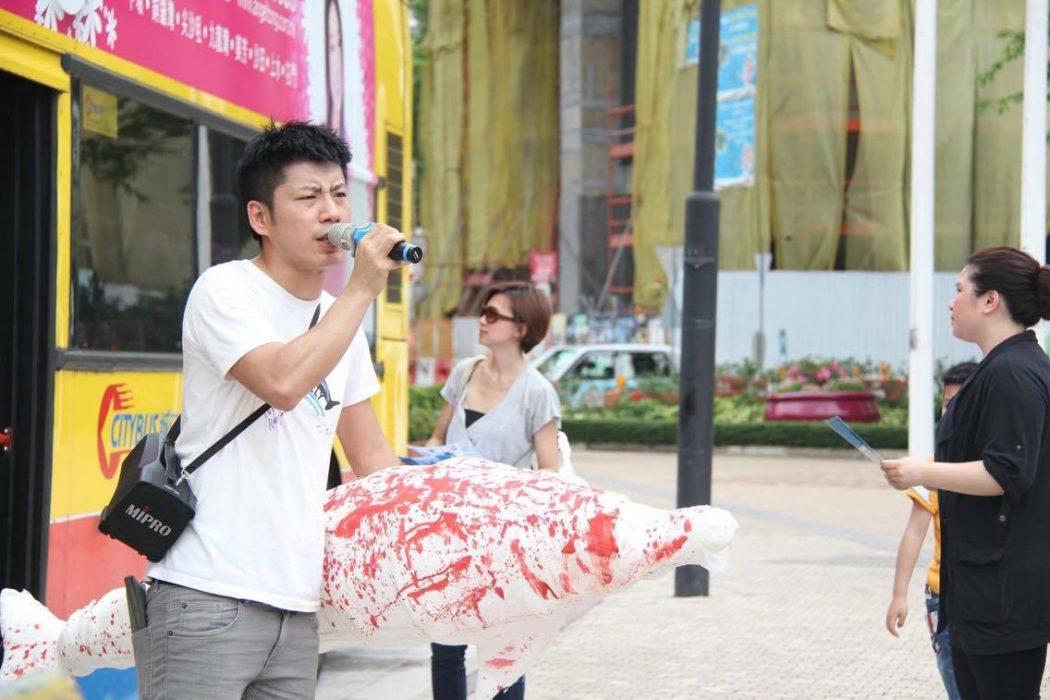
Mak said that endangered animals should not be given priority. “The lives of a panda and a stray dog are equally worthy. We shouldn’t be spending so many resources on protecting certain animals,” he said. “If a species is going extinct, that means the earth is no longer suitable for them. We shouldn’t try to keep them alive or breed them for the sake of it.”
He gave the example of dolphin conservation: “If we abuse dolphins to satisfy our desires, we don’t deserve them. Then we shouldn’t try to make up for it with environmental compensation plans. I don’t want to make them suffer by forcing them to live.”
Animal rights, animal welfare
Animal welfare advocates endorse the responsible use of animals for human purposes. In contrast, animal rights advocates believe that animals should not be used in any way – with some further arguing for equality between animals and humans.
“Many people think that it’s okay to eat meat or display animals in zoos as long as we treat them well. But we [animal rights activists] don’t accept that,” said Mak.
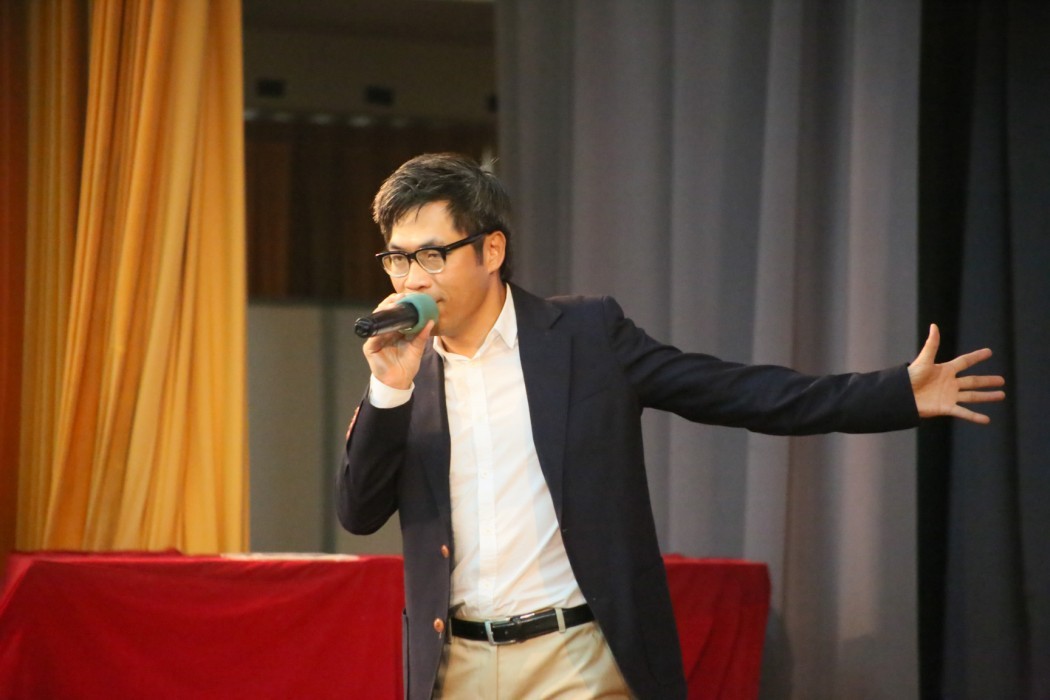
“It is very difficult to promote animal rights because it is such a progressive concept,” said Mak. “Many social and environmental campaigns are about fighting for more rights. But animal rights advocates are instead asking for fewer rights, such as the rights to eat meat and to use leather products.”
Wong said that animal rights activists are a minority in Hong Kong. “Mainstream organisations such as the SPCA are at best animal welfare groups since they accept the humane killing of animals,” he said.
Ocean Park in the eyes of activists
The two activists have for years been protesting against Ocean Park over animal captivity. Mak said that among the many causes he has fought for, the Ocean Park campaign has been the hardest to promote.
“Campaigns like anti-fur and anti-dog-meat are relatively easy because the issues are sensational and clear-cut,” said Mak. “But Ocean Park has a very good public relations team; it also has many supporters since many Hongkongers grew up going to Ocean Park.”
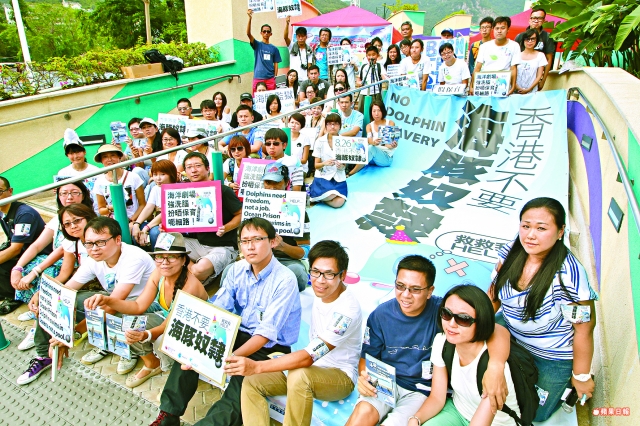
Wong thinks that Ocean Park does not value the opinion of animal rights groups such as his.
“Ocean Park was quite responsive to media enquiries at the beginning,” said Wong. But after the press revealed problems in the theme park, such as a stressed dolphin found to have repeatedly slammed herself against the wall in 2013, Wong said Ocean Park “has become more evasive and will skillfully cover up deaths of animals” in its care.
The activist recalled a moment of defeat in his campaign against Ocean Park. “In 2013, we made a prop of a dolphin painted in red for a protest at Ocean Park,” said Wong. “We were not only told to leave by Ocean Park but also by the protest’s organiser, because our prop was too ‘bloody.’”
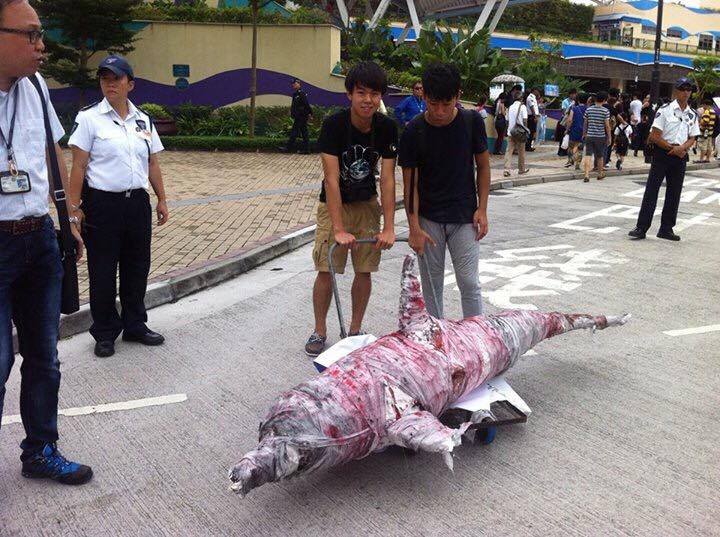
“But what is truly ‘bloody’ is that dolphins are forced to go through training and eat dead fish,” said Wong. “That said, our influence is limited – sometimes we had fewer than 30 participants in a protest. So we’ve reflected on our mobilising strategies.”
‘Assurance population’
Suzanne Gendron, Executive Director of Zoological Operations and Education of Ocean Park, told HKFP that Ocean Park is committed to ensuring the highest standards of animal welfare for all animals in its care. She added that Ocean Park has allocated millions of dollars in funding over the last 17 years to support panda research, education and conservation projects.
In response to the activists’ demand that Ocean Park end animal captivity, Gendron said that it is not practical or in the best welfare interest of the animals in Ocean Park.

“We strongly believe that the impact of actually seeing and connecting with animals is much more immediate and far-reaching than alternative methods, thereby irreplaceable in inspiring people to make behavioural changes in their daily lives to contribute to protecting these precious animals,” she said.
“There may also come a day when the animals under Ocean Park’s care are the only members of their species left,” she added. “These animals act as an assurance population as we fight to save habitats and the environment.”
A long battle
In the long battle to transform the mainstream narrative of animal treatment, the activists have had moments of encouragement.
Wong, who started a wild boars concern group three years ago, said that the group’s advocacy efforts have helped correct the common misconception that wild pigs are fierce pests.
Through years of campaigning, Wong has also observed a change in the government’s attitude towards wild boars. For example, the government no longer arbitrarily kills wild boars, and maintains open communication with Wong’s group whenever it catches one. “This is one of our small achievements,” said Wong.

Mak, who has been helping stray animals since he was a teenager, felt that a breakthrough in Hong Kong’s animal rights movement was the 2014 incident of a dog killed after failed attempts to remove it from the East Rail Line tracks.
“By societal standards, the dog – a stray of mixed breed – was at the lowest level of society, and yet the incident sparked outrage,” said Mak. “It shows that Hong Kong people would still react to injustice.”
The incident also led to re-examination of the MTR Corporation policies. Mak said that the company had made concrete improvements, such as by repairing fences along the tracks. In May, the MTR ensured a dog found on the tracks was returned to safety before resuming train services.
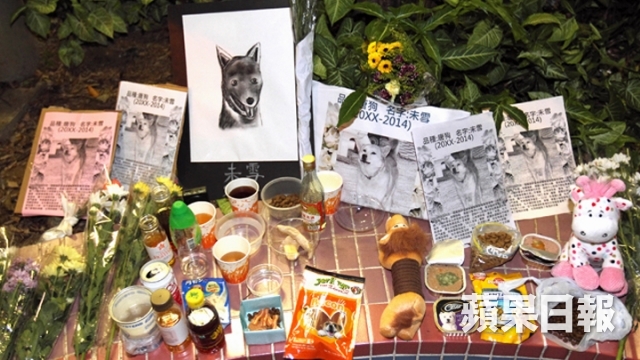
“In terms of awareness and practical outcome, the incident showed that our efforts had had some impact,” said Mak. “It was a proud moment.”
But the activist said the battle for animal rights will not be easy. Mak is now trying to change the government’s decision to loosen the law on dog breeding. He said the decision was a great defeat to him as he had been opposing the proposal for four years.
He has a clear goal: to make systemic changes. Mak said he founded NPV ten years ago “out of superficial compassion,” but became an animal rights activist over time as he learned more about the philosophy.
“Compassion is not enough. We can’t change society based only on compassion,” he said. “We must also challenge the system.”
